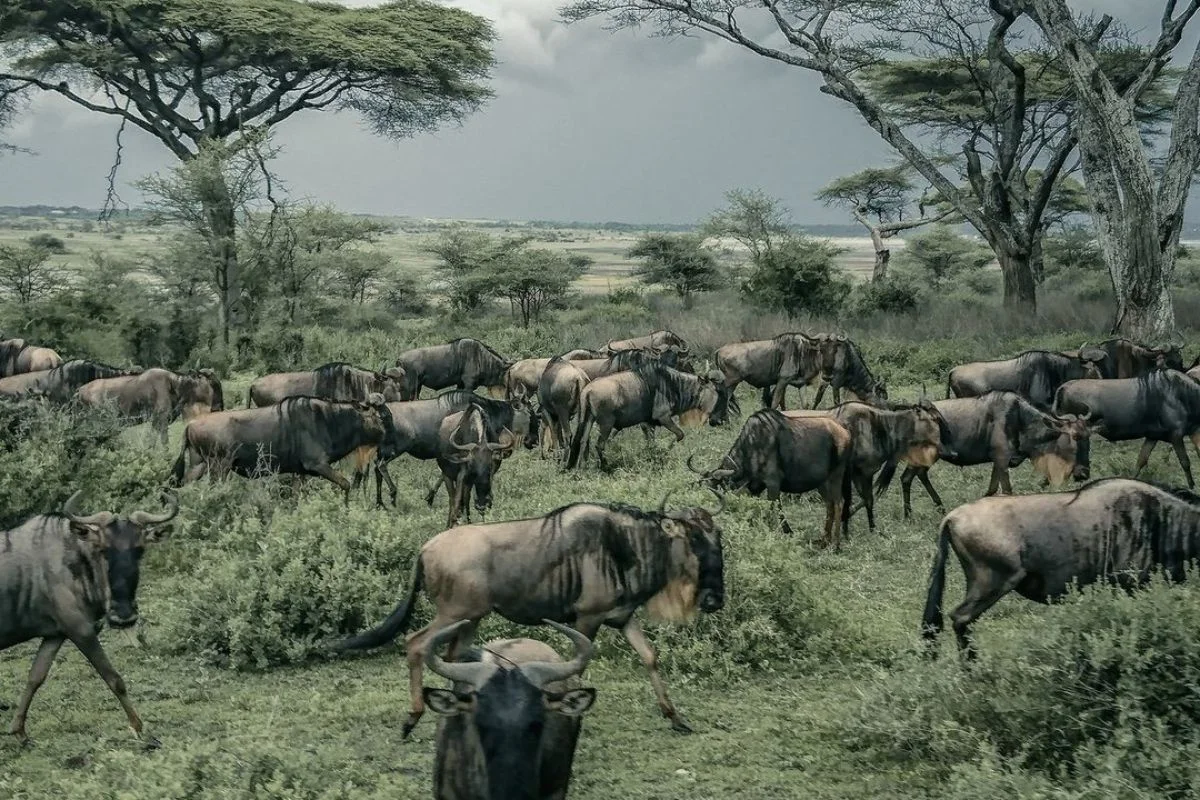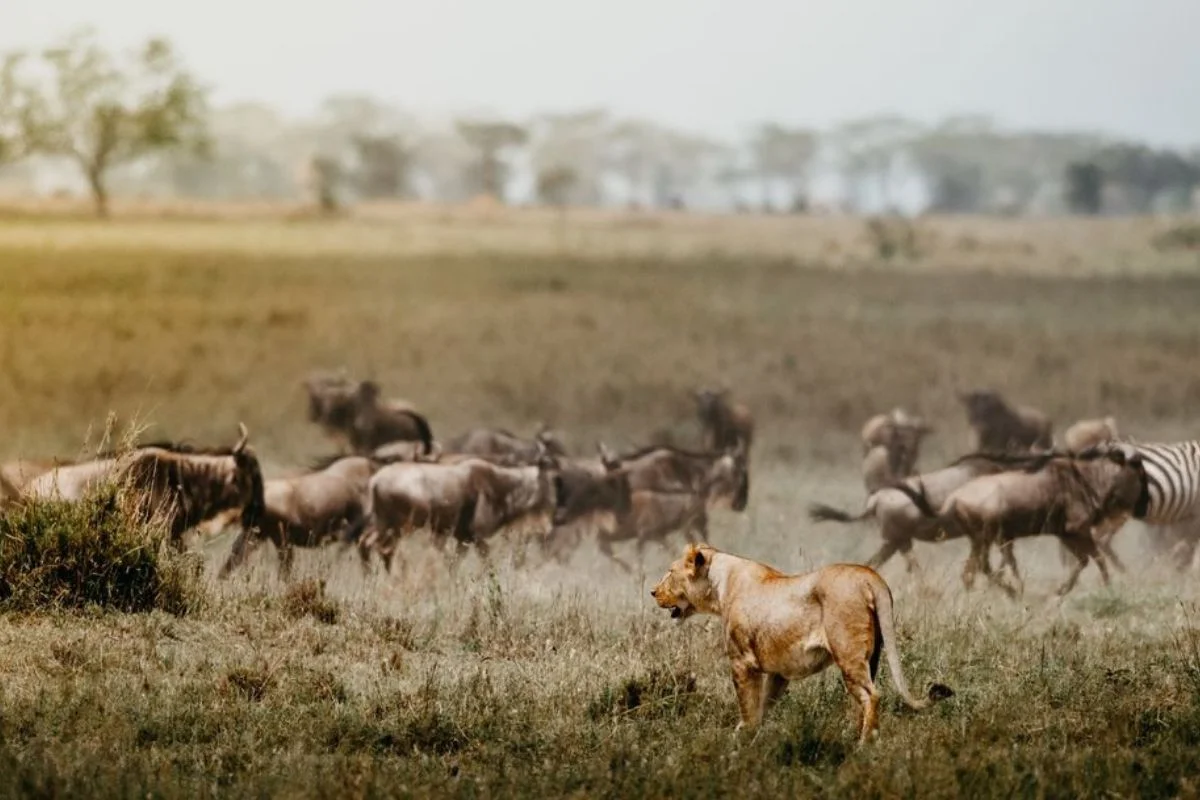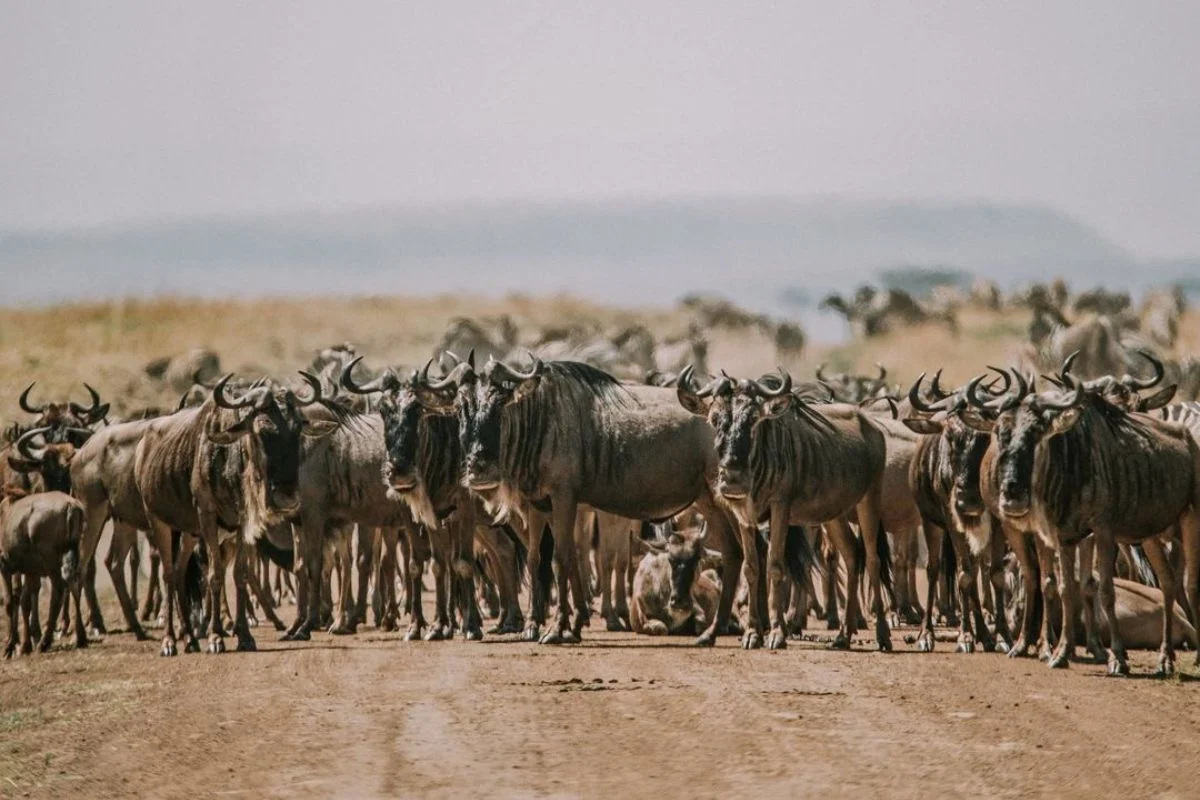Whether the wildebeest are having calves or crossing rivers to escape predators, they are always moving throughout the year. Continue reading to find out where the Great Migration usually is at different times of the year, or click on a month below to see what happens during that time.
The Great Migration in January, February and March
Each year around January, the migration ends its journey south, moving along the eastern edge of the Serengeti into the Ngorongoro Conservation Area. Here, the plains have nutritious grass, providing ideal conditions for the herds to raise their newborn calves.
Although the migratory cycle has no real beginning or end except for birth and death, it makes sense to consider the birthing season as the start of the migration. In late January or February, the herds occupy the short-grass plains on the lower northern slopes of the Ngorongoro Crater highlands and around Olduvai Gorge. About 400,000 calves are born here over two to three weeks, which is nearly 8,000 new calves every day.

The Great Migration in January, February and March | Seko Tours Adventures
The Great Migration in April and May
In April and May, after having their young in February and March, the wildebeest herds start moving northwest to find fresh grass in the central Serengeti. Thousands of zebras and smaller groups of antelope join them on this journey.
This movement is part of the larger cycle known as the Great Migration. During this time, the animals travel together in search of food and water, creating one of the most impressive wildlife spectacles on Earth. The journey is vital for their survival, as they constantly need to find new grazing areas.

The Great Migration in April and May | Seko Tours Adventures
The Great Migration in June and July
In June, the dry season begins, and many wildebeest gather in the Western Serengeti and along the southern banks of the Grumeti River. Each migrating animal must cross this river, which is full of crocodiles – the first of many dangerous river crossings.
As June turns into July, hundreds of thousands of wildebeest and zebras continue moving north along the western edge of the park towards an even more dangerous obstacle: the Mara River in the northern Serengeti. These river crossings are some of the most thrilling wildlife events in the world. They usually start in July when the high season begins, but the exact timing depends on nature.

The Great Migration in June and July | Seko Tours Adventures
The Great Migration in August, September and October
By August, the herds have crossed the Mara River and are spread throughout the northern region of the Masai Mara, with many remaining in the northern Serengeti. When the river is full, the crossings are very dangerous due to panic, strong currents, and waiting predators, causing many animals to die. Even when the river is calmer, crocodiles, lions, and other predators still kill many wildebeests. Some crossings have only a few animals, while others have a continuous flow of animals for hours.
RELATED ARTICLE: Best Time for a Safari in Tanzania
By September to October, the main chaos has ended, and the herds gradually move eastward. However, the wildebeests will face the Mara River again as they prepare to cross it for their return journey southward.

The Great Migration in August, September and October | Seko Tours Adventures
The Great Migration in November and December
After the short rains in late October and early November, the wildebeest move from Kenya into the eastern Serengeti, passing through the Namiri Plains, known for many cheetah sightings. By December, they spread out across the eastern and southern areas.
In the early months of the new year, the rains make the grass in the southern Serengeti lush and green. This attracts the herds of wildebeest, zebras, and other plains animals. The cycle continues as the calving season begins again








[…] RELATED ARTICLE: How the Great Migration Moves Throughout The Year […]
[…] you plan to come to Tanzania to experience a safari? Imagine witnessing the Great Migration in Serengeti, exploring the Ngorongoro Crater, or climbing Mount Kilimanjaro. With Seko Tours Adventure, you can […]